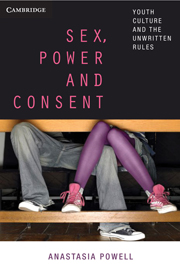6 - Technology
Unauthorised sexual images and sexual violence
Published online by Cambridge University Press: 03 May 2011
Summary
While the issues of sexual violence and the meaning of consent are widely discussed in the context of direct physical encounters, emerging technologies are changing the face of social and sexual interaction, particularly for young people. Use of information and communication technologies (ICTs) is a ubiquitous feature of contemporary life for Gen-Y, and indeed in Western societies more broadly. In particular, technologies such as mobile phones, social networking websites, personal blogs and video-posting websites are ever-expanding, with young people aged 14 to 34 representing the greatest proportion of this consumer market. While these new technologies may offer spaces for young people to communicate and interact outside the traditional gender norms and discourse ordinarily at play in their sexual encounters, I suggest that, in fact, they also create new opportunities for facilitating sexual violence. As such, despite their potential as fields of social interaction free of gender norms and discourse, ICTs should also be understood as offering new forums for pressure where the unwritten rules at play in many young people's face-to-face sexual encounters continue to hold sway.
This chapter considers some of the issues raised by the use of ICTs in sexual violence, including sexting and the distribution of unauthorised sexual images. Throughout, I use the terms ‘visual image’ and ‘unauthorised sexual image’ to refer to both still and moving images taken by any number of devices, including mobile phone cameras, digital video cameras, web cameras and surveillance devices.
- Type
- Chapter
- Information
- Sex, Power and ConsentYouth Culture and the Unwritten Rules, pp. 106 - 125Publisher: Cambridge University PressPrint publication year: 2010

